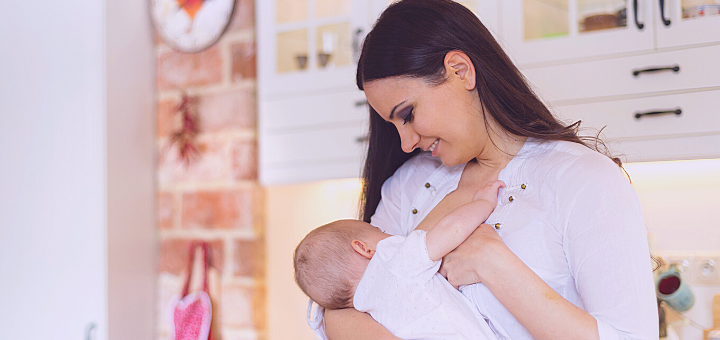Everything You Need to Know About Breastfeeding
It’s all about breastfeeding here today, everything you need to know as a breastfeeding mother. All those breastfeeding questions that you keep asking yourself, I rounded them up, sent them to a certified lactation counselor, and got the answers for you.
*some links in this post may be affiliate links
Shoutout to Jada Glover of Lactation Mamas. Jada not only came through with the answers to our breastfeeding questions, but she also did it with such detail, I am in awe. You can tell she really knows her stuff.
Need breastfeeding support?
You can reach out to Jada for a virtual consultation or take one of her information-packed breastfeeding courses here. The Breastfeeding with Ease course is currently on sale for 30% off
Be sure to read more about Jada at the end of the post.
More breastfeeding posts:
- The ultimate breastfeeding guide for the new mom
- How to increase your breast milk supply fast
- 8 breastfeeding essentials every mom should have
- 4 reasons to start pumping
How long will it take for my milk to come in?
You will begin producing colostrum (thick “liquid gold” milk) late in pregnancy, and that will be the first milk your baby gets after being born. This is the perfect nutrition for your baby! Your milk will then change into “transitional milk” and lastly to “mature milk” once it is fully in. This process may take on average 5 days, could be more or less depending on your labor and delivery experience. When your milk is in, you will likely hear your baby swallowing, a “keh keh keh” sound and see it visibly.
Is breastfeeding painful?
Your breasts may hurt the first few days after you give birth. You have many hormonal shifts happening during this time, while you’re learning to breastfeed. Latching your baby may be painful the first few days, especially if your baby isn’t getting a deep latch. If nipple soreness continues past day 7 or includes open sores, blisters, bruising, or misshapen nipples, this is NOT normal and is probably due to a poor latch and/or positioning. Getting to the root of the problem will guide the solution. Call your lactation specialist or healthcare provider as soon as possible. Do not let the situation get worse!
How can I get a good latch and how do I know if the baby is latched correctly?
In the early days of breastfeeding, a baby-led latch may help your baby get a deeper latch. Lay your baby on your chest, skin to skin, and let them find your nipple by bobbing their head. This helps them take the lead and may allow a more comfortable latch.
>>> Book an online virtual consultation with Jada Glover, a certified lactation consultant <<<
Mother-led latching can be followed by initial skin-to-skin contact and followed by these steps:
- Line up your baby’s chest to your chest and baby’s nose to your nipple.
- Express a tiny bit of colostrum on the end of your nipple.
- Run your nipple lightly across your baby’s upper lip, pausing on baby’s lower lip to help baby’s mouth open wide.
- Wait for baby to open his mouth wide.
- Aim your nipple toward the roof of his mouth.
- His chin should come to your breast first.
- Pull your baby onto your breast quickly and gently.
Watch these signs for a good latch:
- All of the nipple and as much of the areola as possible is in your baby’s mouth.
- Lips are turned out.
- Tongue is over lower gum.
- Baby stays on your breast.
- There is not biting or pinching pain.
- Baby is swallowing and transferring milk (watch for long jaw motions and listen for swallowing sound “keh keh keh”)
How much milk does my baby need?
Keeping a close eye on your baby’s hunger cues is the best way to understand how much milk your baby needs, especially in the first several weeks. Your baby should eat 8-12 times in a 24-hour period, and potentially more often if they are cluster feeding or going through a growth spurt. When your baby is born, they may only eat 1-2 teaspoons of colostrum at one feeding, but as they grow, they will begin to consume more milk, even up to an average of 3-4 ounces at one time.
How do you know when to switch breasts when breastfeeding?
Although you don’t have to switch breasts at every feeding, you can. If you don’t switch during a feeding, start with the opposite breast at the next feeding to ensure an even production of milk. If your baby is still showing hunger cues after the second letdown on a breast, you can offer the opposite breast during the same feeding until your baby is satisfied.
Can babies breastfeed while sleeping?
Yes, babies can breastfeed while they sleep. This is often called “dream feeding” and if you are practicing safe bed-sharing with your baby, you may notice they breastfeed at all times of the night while they are sleeping. Sometimes breastfeeding mothers may feed their baby before they lay them down at night while they are sleeping, to help them stay asleep a little longer for that sleeping session.
How do I know if my milk supply is low?
Many mothers think they have a low milk supply if their breasts feel “empty” or they aren’t engorged. Once your milk comes in and regulates, it is normal for them to feel softer after a feeding. This does not indicate a low milk supply.
Watch for these signs in your baby to determine if they are getting enough milk: at least 8 feedings in a 24-hour period; enough wet and dirty diapers for their age; adequate weight gain; satisfied baby after a feeding. Track feedings to ensure baby is getting enough, but watch baby not the clock.
>>>Struggling with breastfeeding? Take Jada’s online breastfeeding with ease course <<<
How can I increase my breast milk fast naturally?
The most natural way to increase your breastmilk supply is to put your baby at the breast to breastfeed. This triggers your hormones to make more milk as your breasts are stimulated and release more milk. The more milk consumed by your baby, the more your body will make.
Other tips for increasing supply include:
- Nurse in the golden first hour after birth.
- Ensure ample skin-to-skin contact immediately after birth.
- Breastfeed often (even at night)!
- Learn to hand express your milk.
- Don’t wear tight bras.
- If you are pumping, you can also try “power pumping” to increase supply. Pump for a short duration, like 10 minutes, then stop for 5 minutes, pump again for 10 minutes, rest for 5 minutes, and pump again for 5 minutes. It is more about the starting and stopping that triggers your body to make more milk than it is the duration of the pumping sessions.
- Lactogenic foods like oats, fennel, coconut, moringa leaf, and others can also help some mothers increase their milk supply naturally, although this is more of a trial and error approach to understanding which foods work best for you. Eating a healthy diet full of real foods is the best way to ensure your body is getting ample nutrients to make the best milk for your baby.
What foods help produce breast milk and what foods should I avoid while breastfeeding
In general, I always encourage breastfeeding mothers to eat a healthy, balanced diet full of real, whole foods like vegetables, fruits, proteins, and healthy fats. This is the best kind of lactogenic diet. The more nutritious your diet is, the more nutrient-dense your milk will be, and the healthier you will feel.
You don’t need to avoid any particular foods while breastfeeding if you are eating a healthy diet and your baby doesn’t show signs of discomfort. If you think your baby is intolerant to a particular food, keep a food journal to identify the food that may be causing an issue. Omit that food from your diet temporarily and try adding it back in when your baby’s digestive system is a little more mature.
When is the best time to start pumping and to introduce a bottle?
Unless you need to give your baby a bottle for medical reasons, such as if they’re in the NICU, it’s best to wait to introduce a bottle or any artificial nipple until breastfeeding is well established, at least 3 weeks, but ideally 4-6 weeks. If you need to return to work, introduce your baby to a bottle 2 weeks prior so your body can start getting used to a pump (it may not respond well right away…it takes practice too) and have your caregiver practice paced bottle feeding to mimic being at the breast. If you don’t, your baby may develop a preference for a faster flow than your breasts allow which could make it more difficult to transition between breast and bottle.
What are your best tips for a new mom who wants to breastfeed successfully?
- Room-in with your baby in the hospital and room-share at home. Put baby skin-to-skin as much as possible.
- Let your baby breastfeed often by responding early to your baby’s feeding cues.
- Take advantage of night and early morning feeds when your prolactin levels are highest.
- Unless there is a medical reason, giving formula to a breastfeeding baby can have disadvantages and may cause a drop in your milk supply.
- Good positioning and latching are the keys to successful breastfeeding.
- Avoid routine use of bottles or pacifiers in the first few weeks until breastfeeding is well established.
- Use hand compression on your breasts during a feeding to help move your milk along and stimulate your breasts to make more milk.
- Find support through friends, support groups, or playgroups.
- Contact a lactation specialist as soon as possible if you are having problems breastfeeding. Professional support is critical during the early stages and can help you meet your breastfeeding goals!

Meet Jada Glover, Certified Lactation Counselor

I am a Certified Lactation Counselor and the founder of Lactation Mamas. I specialize in online breastfeeding education and support for prenatal and postpartum mamas.
I know everyone’s situation is different and I support all mamas in their breastfeeding journey, from bottle feeding to exclusively nursing, or anywhere in between.
Jada’s Online Courses and Consultation :
- Breastfeeding online masterclass (Free Class)
Courses Currently on Sale (30% off)
Lactation Mamas Online Breastfeeding Course
I’m sure by now you can tell how knowledgeable Jada is with breastfeeding.
Here are some of the things you will learn in her online breastfeeding course:
- Understand the realistic expectations of breastfeeding
- Preparation and education for what the newborn period is really like
- Learn how to tell if you’re producing enough milk
- Figure out why your baby won’t latch
- Discover the root cause of your breast pain or soreness
- Learn what nutrients you should be eating while breastfeeding
- Come up with a plan for returning to work or school
And the bonuses you get …
- You will get a 20 Minute Session with Jada to learn the best foods for you and your baby.
- She will help you troubleshoot Common Breastfeeding Challenges
- Get a Milestone Tracker for your breastfed baby
- A feeding and diaper log for your baby
- Lullaby & Me’s Newborn Sleep Guide
- Top Lactogenic Foods Grocery List and the allergen foods to avoid
- And so much more.




Sending to my sister. Thank you ?
You are welcome, Tiffany. I am sure your sister will find these answers to breastfeeding questions really useful.
I love all these comprehensive questions and the detailed answers. I think you covered it all!
Thank you, Brooke. Jada really gave us so much value in her answers. It’s almost like getting a free virtual consultation with her, right? I hope my breastfeeding mamas reading this really benefit from this.
Hi Debbie,
Thanks for the post. I think is very nice. Great information, precise, and simple to read and understand by any mom even little literacy.
Thanks for the info is very helpful.
V/r
Benson
Thank you. I am glad you found these breastfeeding questions and answers by a lactation counselor useful.
Hi Debbie,
I’m first time mom of a 7-month-old baby and lactation for me was very hard, I turn back now, and honestly, I don’t know how I made it lol. I’m still breastfeeding! I read all your post and is super complete! I wish I found you and Jada earlier but for sure will recommend for other moms to be!
Congratulations on making it this far in your breastfeeding journey, Lula. I know how difficult it can be. Hopefully, some moms who are new to breastfeeding will find these beneficial. Especially now that the answers to the breastfeeding questions are from a certified lactation counselor, I think she will be super helpful to many moms.